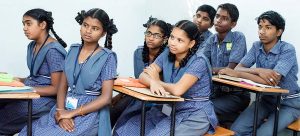CHILD RIGHTS ADVOCACY
ENLIGHTENING (SENSITIZING) THE COMMUNITY
CHILD RIGHTS ADVOCACY
Problem Description
 Sensitization of the community on the issues of child rights and gender equality is one of the key components of the CHORD mission. A concerted effort from all stakeholders in propagating the issue to break the silence and to galvanize public opinion is of paramount importance in this whole exercise. It is about bringing a shift in the consciousness of the people and urging them to do what is right but not what is easy and what has been a flawed convention. It is about bringing about a change in attitude for good.
Sensitization of the community on the issues of child rights and gender equality is one of the key components of the CHORD mission. A concerted effort from all stakeholders in propagating the issue to break the silence and to galvanize public opinion is of paramount importance in this whole exercise. It is about bringing a shift in the consciousness of the people and urging them to do what is right but not what is easy and what has been a flawed convention. It is about bringing about a change in attitude for good.
It is about looking at the situation differently and changing one’s perspective towards women and children key pillars of our society
Approach and Methodology of the Program:
CHORD is the Resource Cell and focal point for key activities of advocacy and sensitization of key partners at the Mandal level and colony-level network offices; for the training of remedial school staff and administration on sensitization. It will add value to the project in the following ways:
- Facilitating dialogue and exchange of experiences amongst the CHORD Project units.
- Mainstreaming issues relating to child labor and education into all training programs such as the leadership development program, joint educational program, personality development program, etc.
- Conducting sensitization programs for parents of child laborers on issues relating to child labor and CHILD rights issues.
- Conducting sensitization programs for Teachers of local government and private schools.
- Training of CHORD staff on Project implementation, accounts, and administrative matters.
- Gender issues and dialogue on gender equality and inclusion among the stakeholders
- Dissemination of CHORD success stories.
TARGET GROUPS:
The target can be divided into two categories. They are:
DIRECT BENEFICIARIES
- Parents of Child Labour.
- Employers of Child labor.
- Members of Teachers Associations.
- CHORD Staff in Projects Centers
INDIRECT BENEFICIARIES
- Readers of CHORD Publications and “CHORD Success Stories”
- Industrial Community consisting of employers, employees, trade union members.
- Family members of Child Labour in the Project Area.
MEANS OF SENSITIZATION
- Survey and Mobilization
- Door to door campaign
- Facilitating raids with labor departments
- Rallies and Roadshows against child labour
- Involving all the civil society organizations to speak against child labor
- Seminars and special meetings for women facilitated by resource persons
- Media campaigns in electronic and print media
THE COMMUNITY AND VARIOUS STAKEHOLDERS OF THE COMMUNITY SENSITIZED ON THE FOLLOWING CHILD RIGHTS
CHILD RIGHTS A GIST
They are abandoned. They do not get a chance to step into a school. They are left to fend for themselves on the streets. They suffer from many forms of violence. They do not have access to even primary healthcare. They are subjected to cruel and inhumane treatments every day. They are children – innocent, young, and beautiful – who are deprived of their rights.
In the history of human rights, the rights of children are the most ratified. The United Nations Convention on the Rights of the Child (UNCRC) defines Child Rights as the minimum entitlements and freedoms that should be afforded to every citizen below the age of 18 regardless of race, national origin, color, gender, language, religion, opinions, origin, wealth, birth status, disability, or other characteristics. These rights encompass freedom of children and their civil rights, family environment, necessary healthcare and welfare, education, leisure, and cultural activities, and special protection measures. The UNCRC outlines the fundamental human rights that should be afforded to children in four broad classifications that suitably cover all civil, political, social, economic, and cultural rights of every child:
